The Jews of Color Field Building Initiative is a national effort focused on building and advancing the professional, organizational and communal field for Jews of Color through grant making, research and field building, and community education, and hosts the nation’s first ever philanthropic and capacity building fund expressly dedicated to responding to racial injustice through helping further establish, fortify and building-out the field of support for Jews of Color.
We support the JOCFBI through a consortium of funders: the Walter and Elise Haas Fund, the Jim Joseph Foundation, the One8 Foundation, the Charles and Lynn Schusterman Family Foundation, and the Harry and Jeanette Weinberg Foundation.
For Immediate Release
Contact: Jason Edelstein, 510-239-1102
Population of Jews of Color is Increasing in U.S., Despite Undercounting in Population Studies
New Report Details Survey and Data Problems in Decades of Studies; Highlights Urgent Need to Account for Growing Population
San Francisco, CA — Jews of Color in the U.S. are a growing population but have been systematically undercounted in decades of American Jewish population studies, claims a new report released today by the Jews of Color Field Building Initiative, The Concentration in Education and Jewish Studies at the Stanford Graduate School of Education, and the Swig Program in Jewish Studies and Social Justice at the University of San Francisco. Researchers of the report, Counting Inconsistencies: An Analysis of American Jewish Population Studies, with a Focus on Jews of Color, drew this conclusion after examining data from 25 national or local population studies, and the survey strategies deployed to collect it.
Given inconsistencies in how population studies have been conducted, researchers can, at best, make only an educated guess about the population of Jews of Color in the United States.
- Based on the three most comprehensive data sets available (the 2013–2019 American Jewish Population Project, the 2011 New York Community Study, and the 2017 San Francisco Bay Area Community Study) researchers estimate that Jews of Color represent at least 12-15% of American Jews, or about 1,000,000 of the United States’ 7,200,000 Jews.
- More younger people identify as nonwhite than older people do. With cohort replacement, this means that the future of American Jewry is racially diverse.
- Even with data that undercounts Jews of Color, as younger, more racially and ethnically diverse cohorts replace older, more homogeneous ones, our understanding of the basic racial and ethnic makeup of the American Jewish community will change.
“Everyone in the Jewish community, but especially the community’s leaders and organizers, must understand the full and diverse picture of the American Jewish population today,” says Ilana Kaufman, Director of the Jews of Color Field Building Initiative. “Our community is changing and evolving in many ways, including its racial composition. This change should have a deep influence in how we think about resource allocation, programming, outreach efforts and more.”
Counting Inconsistencies notes that at a minimum, more than 20 percent of “Jewish households” include people who identify as nonwhite. If the population trends along the same lines as the U.S. Census, then some decades from now Jews of Color will become the majority of U.S. Jews. Yet, American Jewish Population Surveys have largely neglected to systematically and consistently ask about the racial and ethnic identities of U.S. Jews, resulting in a dearth of information about the composition and size of the population of Jews of Color. By extension, Jews of Color have been omitted from Jewish communal life, due in part to the socially constructed notion that the vast majority of American Jews identify as “white.”
“There simply is no guiding principle that researchers used in these population studies with respect to accurately asking about and subsequently counting Jews of Color,” adds Dr. Ari Kelman of Stanford University and the lead researcher of Counting Inconsistencies. “As more American Jews identify as non-white, the survey inconsistencies and lack of clarity in this area becomes a more critical problem that needs to be appropriately addressed.”
Some previous Jewish population surveys did not ask about race or ethnicity at all. Other survey designs sampled respondents in ways that likely result in undercounting Jews of Color, including sampling “distinctive Jewish names,” relying heavily on Jewish community lists, and/or only including “Jews by religion.” And some survey questions inconsistently inquired about race and ethnicity. Sometimes, both questions and responses confuse family origin, racial, ethnic, national, and even denominational identities.
Adds Kaufman, “Even with past survey issues, we have a picture now of what the American Jewish community will look like over the next several decades. The simple fact is we will be more diverse than ever. How are we going to welcome in and engage people from different backgrounds, interests, and experiences? Those are the big questions facing our community.”
Counting Inconsistencies includes a set of recommendations for future research to follow to ensure more accurate counting of Jews of Color, including using more racially inclusive, sensitive sampling strategies and frames that do not rely significantly on self-identified “Jews by Religion,” “Distinctive Jewish Names,” and/or community organization affiliations; partnering with other regions or organizations to, as teams, develop language for racial identity questions; and developing consistency across survey question language reflecting best practices and how Jews of Color identify rather than how researchers identify Jews of Color; among other recommendations.
Kaufman will share the findings at upcoming events around the country, including May 21 in Washington, DC at the Religious Action Center 2019 Consultation on Conscience, May 22 at the UJA-Federation of New York, June 6 at the Jewish Federation of Greater Los Angeles, and June 26 via a webinar with Dr. Ari Kelman.
Along with Dr. Kelman, researchers included Dr. Aaron Hahn Tapper, University of San Francisco; Ms. Izabel Fonseca, Stanford University; and Dr. Aliya Saperstein, Stanford University.
This research is the result of a partnership between The Jews of Color Field Building Initiative, The Concentration in Education and Jewish Studies at the Stanford Graduate School of Education, and the Swig Program in Jewish Studies and Social Justice at the University of San Francisco. The Jews of Color Field Building Initiative is funded by the Leichtag Foundation, the Walter and Elise Haas Fund, the Jim Joseph Foundation, the One8 Foundation, the Charles and Lynn Schusterman Family Foundation, and the Harry and Jeanette Weinberg Foundation. The study was supported by the Harry and Jeanette Weinberg Foundation.
Counting Inconsistencies is a meta-study that examined 15 local and community studies (Los Angeles 1997, Seattle 2000, Phoenix 2002, Atlanta 2006, Denver Boulder 2007, Philadelphia 2009, Chicago 2010, Cleveland 2011, New York 2011, Miami 2014, Boston 2015, Pittsburgh 2017, SF Bay Area 2017, and Washington DC 2017); seven national population studies (National Jewish Population Study (NJPS) 1970, NJPS 1990, National Survey of Religious Identity 1990, NJPS 2000, Heritage and Religious Identification 2002, Pew Research Center Survey of U.S. Jews 2013, and the American Jewish Population Project), and four population specific studies (Generation Now, Generation Next, Jewish Futures Project, and Hillel International Research on College Students.)
###




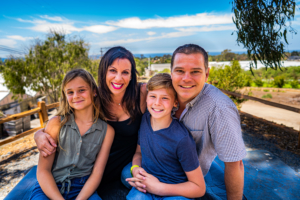
 Stacie and Jeff Cook understand commitment. They live it.
Stacie and Jeff Cook understand commitment. They live it. Black, Jewish and Queer. These three identities weave the fabric of who I am, but it took a long time to believe that they could exist together.
Black, Jewish and Queer. These three identities weave the fabric of who I am, but it took a long time to believe that they could exist together. Lee and Toni Leichtag established the Leichtag Foundation in 1991 following the sale of their business. Lee and Toni were lifelong entrepreneurs with a passion for innovation and for supporting talent. They believed that only with big risk comes big reward. Both born to families in poverty, Toni to a single mother, they strongly believed in helping those most in need and most vulnerable in our community. While they supported many causes, their strongest support was for young children and the elderly, two demographics who particularly lack voice in our society.
Lee and Toni Leichtag established the Leichtag Foundation in 1991 following the sale of their business. Lee and Toni were lifelong entrepreneurs with a passion for innovation and for supporting talent. They believed that only with big risk comes big reward. Both born to families in poverty, Toni to a single mother, they strongly believed in helping those most in need and most vulnerable in our community. While they supported many causes, their strongest support was for young children and the elderly, two demographics who particularly lack voice in our society. Lifelong Baltimoreans, Rabbi George and Alison Wielechowski and their sons, 11-year-old Lennon and 9-year-old Gideon, are more than pursuing the good life in Southern California. Having moved to San Diego more than three years ago, they are fulfilling a lifelong dream.
Lifelong Baltimoreans, Rabbi George and Alison Wielechowski and their sons, 11-year-old Lennon and 9-year-old Gideon, are more than pursuing the good life in Southern California. Having moved to San Diego more than three years ago, they are fulfilling a lifelong dream.

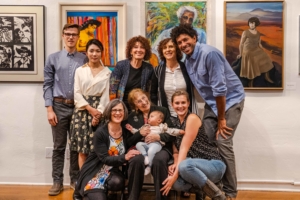
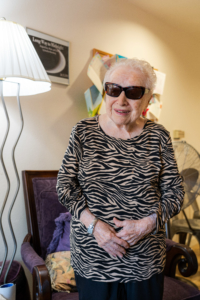
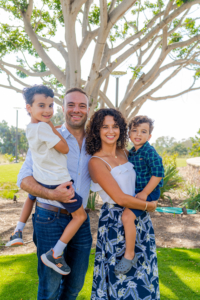

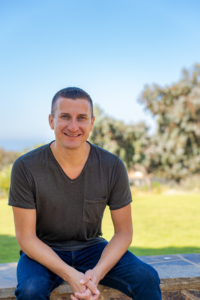 You would think that as the executive director of San Diego LGBT Pride, Fernando Zweifach López Jr., who uses the pronoun they, has done all the coming out they possibly can. A queer, non-binary individual who has worked for many years on civil rights issues, López also speaks openly and often about their father’s family, Mexican-American migrant workers who tilled the fields of rural California.
You would think that as the executive director of San Diego LGBT Pride, Fernando Zweifach López Jr., who uses the pronoun they, has done all the coming out they possibly can. A queer, non-binary individual who has worked for many years on civil rights issues, López also speaks openly and often about their father’s family, Mexican-American migrant workers who tilled the fields of rural California.